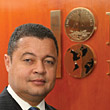| Published: Date: Updated: Author: |
The Bahamas Investor Magazine January 4, 2007 January 4, 2007 Jessica Robertson |
Cash is king and time is money. Bank of The Bahamas International realized there was enough truth to these clichés to invest heavily in technology and training to become the first clearing bank in The Bahamas to offer electronic cheque imaging.
Employing the traditional, manual method of clearing cheques drawn on foreign banks, it takes anywhere from 21 to 40 days before the recipient in The Bahamas can access the funds. But in December 2005, Bank of The Bahamas launched its new electronic process that enables the institution to clear cheques drawn on most US bank accounts in just three days.
“It’s very significant,” says managing director Paul McWeeney. “This means that our clients have immediate or improved access to their cash. This allows them to utilize it faster, so we should see an improvement in the overall cash flow of the economy.”
In order for Bank of The Bahamas to implement the new technology, the United States had to pass federal legislation commonly known as Check 21, which enables US banks to handle cheques electronically, eliminating the costly and inefficient process of moving physical cheques from institution to institution. The new legislation went into effect on October 28, 2004.
Under the new system, Bank of The Bahamas scans the front and back of a cheque deposited by a client and transmits the images electronically to JP Morgan Chase in New York. That bank transfers the same images through its US bank network and, within twenty-four hours, Bank of The Bahamas receives settlement on the cheque. The whole process, from start to finish, takes a mere three days.
According to McWeeney, the deadline for US banks to implement Check 21 was December 31, 2005, and all of the major banking institutions, as well as the majority of secondary ones, have complied.
In addition to improved cash flow and the ability to realize interest on deposits sooner, another benefit of the faster turnaround time is the speed with which banking institutions are able to identify and deal with bounced cheques. By improving efficiency for its customers and seizing opportunities to employ new technologies, Bank of The Bahamas is seeing positive results on its own bottom line. “Last year was another record year for the institution. Our book of business grew by almost 45 per cent,” says McWeeney. “This is a new feature that was only introduced in December and we certainly have seen an increase in US dollar accounts and also certainly in inquiries from persons who maintain US dollar accounts. We definitely will capitalize on that.”
Although Bank of The Bahamas was the first domestic bank to introduce electronic imaging techniques, other banks, including Commonwealth Bank Limited and Fidelity Bank (Bahamas), are now following suit.
Single-day clearance
By the first quarter of 2007, McWeeney, who is also chairman of the Clearing Banks Association, expects the framework for the Bahamian Automated Clearing House (ACH) to be in place. As it stands, all of the member banks are on board, but no deadline to implement the required technology has been established. “It’s a mammoth task, and having everyone invest in the technology is a critical element to making the ACH work,” says McWeeney. “We’re only as strong or as efficient as our weakest link.”
He notes that the investment is significant and, depending on the size of a bank’s branch network, they could be looking at anywhere from a few hundred thousand dollars to millions.
The Association first went to tender for the provision of software in early 2006, but rejected the proposals they received and resumed the process again later in the year.
“Basically we did not feel that what was presented by the potential vendors gave us the equity we were looking for. We have to pick up where we left off and had to make the RFP [Request For Proposal] a lot more elaborate to include a longer vision rather than a short-term vision. A number of original vendors resubmitted bids,” says McWeeney.
Once the system is implemented and member banks upgrade their technology, cheques drawn on Bahamian banks will clear in a single day rather than the current four-day turnaround time. The first part of the automation initiative was finalized in May 2005. The Central Bank of The Bahamas implemented the Bahamas Interbank Settlement System (BISS), a Real Time Gross Settlement System, at a reported cost of $2 million. The BISS allows member clearing banks to settle large value items—$50,000 and over—by entering the various elements of the transaction into the network. It differs from the proposed ACH as elements are entered into the system manually rather than being scanned in.
McWeeney says in recent years the bank has focused a good deal of its energy and resources on creating a more robust IT infrastructure. “The irony of everything is that technically we are recognized for our contribution to the local economy more by overseas entities than by Bahamian entities. Maybe Bahamians haven’t been exposed to what the potential is for banking or to what banking is supposed to be like today in a First World environment,” he says.
As Bank of The Bahamas’ client base increases and more local institutions adopt similar technology, McWeeney says he is confident that perception and expectations among Bahamian residents and businesses are sure to change.









